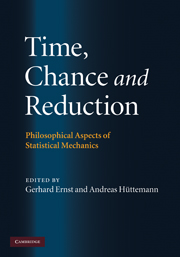Book contents
4 - Quantum gravity and the arrow of time
from Part I - The arrows of time
Published online by Cambridge University Press: 04 August 2010
Summary
Arrows of time
Although most fundamental laws of physics do not distinguish between past and present, there exist classes of phenomena in Nature that exhibit a direction of time: their time-reversed versions, although in perfect accordance with the underlying laws, are under ordinary conditions never observed. Arthur Eddington called such classes ‘arrows of time’, see Zeh (2007) for a detailed overview. The main arrows of time are the following:
radiation arrow (advanced versus retarded radiation);
second law of thermodynamics (increase of entropy);
quantum theory (measurement process and emergence of classical properties);
gravitational phenomena (expansion of the universe and emergence of structure by gravitational condensation).
The expansion of the universe is distinguished because it does not refer to a class of phenomena; it is a single process. It has therefore been suggested that it is the common root for all other arrows of time – the ‘master arrow’. As will become clear below, this does indeed seem to be the case.
The radiation arrow is distinguished by the fact that fields interacting with local sources are usually described by retarded solutions, that is, solutions which in general lead to a damping of the source. Advanced solutions are excluded; they would describe the reversed process, during which the field propagates coherently towards its source, leading to its excitation instead of damping.
- Type
- Chapter
- Information
- Time, Chance, and ReductionPhilosophical Aspects of Statistical Mechanics, pp. 59 - 68Publisher: Cambridge University PressPrint publication year: 2010

